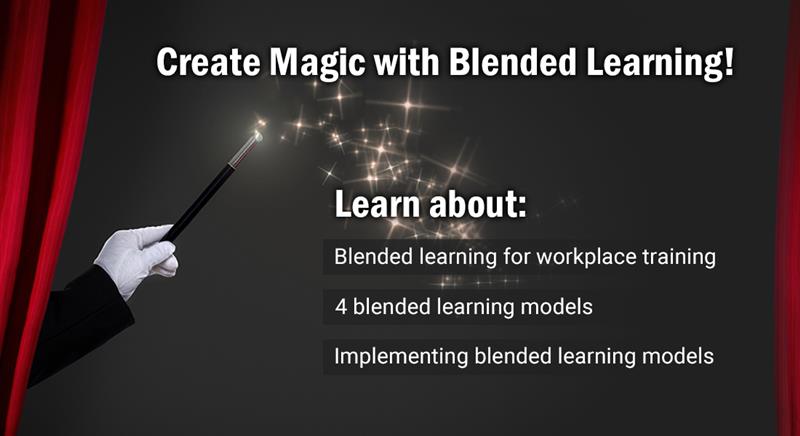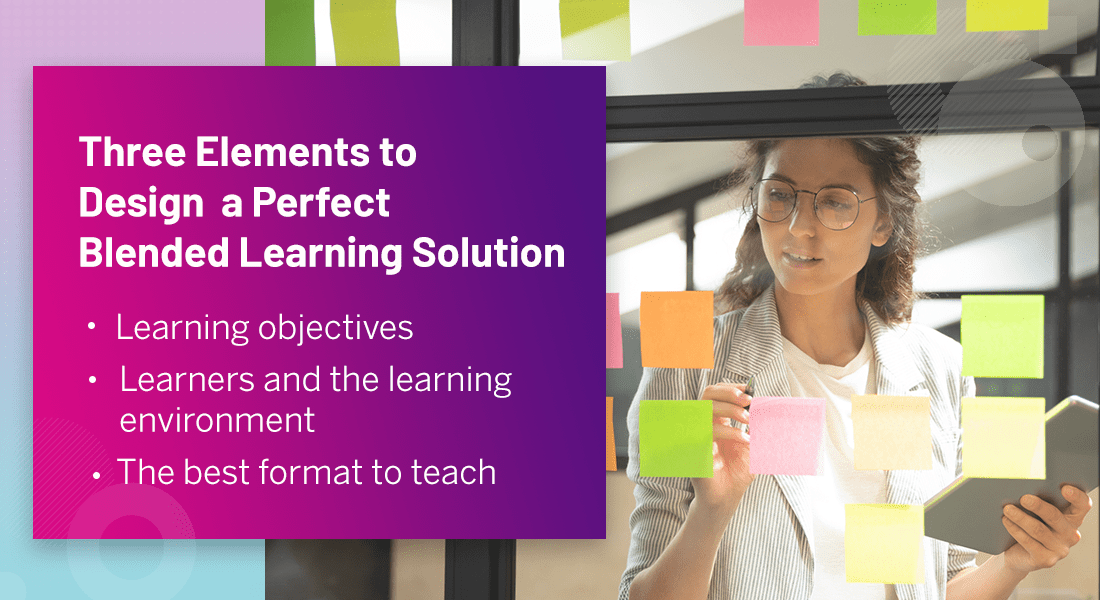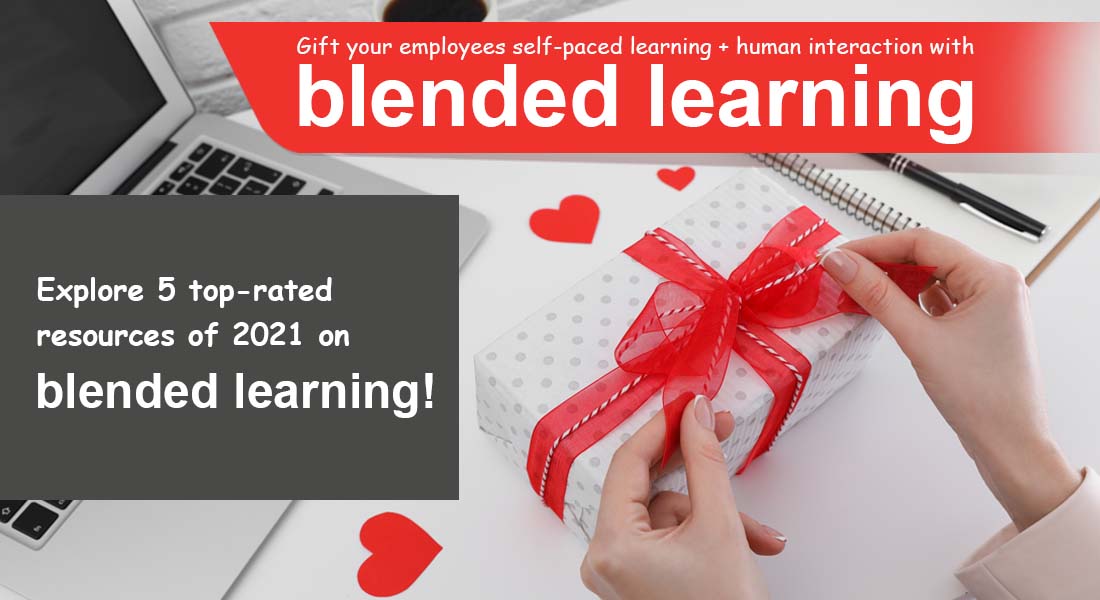Blended Learning Challenges – Here’s How You Can Overcome Them

Elearning is an excellent way to impart training to your employees. However, for many companies, the importance of a classroom session and physical instructor remains strong, making them uncertain about going digital. That’s why many organizations take the middle road and decide to opt for a blended learning approach. With blended learning, you can give employees equal benefits of two very different learning methodologies i.e., e-learning and classroom training.
Blended Learning Implementation
Explore How to Overcome Common challenges
- Adapting to new technology – Start eLearning gradually, with performance support
- Convincing top management – Build a robust business case
Explore more in the post.
How Does eLearning Help?
E-learning can help increase the reach of training, include learning flexibility, give advanced feedback data, engage learners with game-based content, and much more; while classroom learning covers the other aspects of learning like adding a physical touch to learning, promoting collaboration and social learning, and providing a strong sense of discipline toward learning.
Explore the A-Z of blended learning.
Combining the best of both learning methods, a blended approach can deliver a comprehensive learning experience to your employees. But, before you set out to create a blended strategy, it is important that you are aware of the challenges that lay ahead in the path and how to tackle them. Below are some common hurdles that you will face while implementing a blended learning approach.
Some Common Challenges with Blended Learning and Solutions
Challenge 1
If your organization is moving away from a solely classroom training model, then employees might face some difficulty in adapting to the new technology and learning through it. They might face issues related to installation, compatibility, and other technical glitches that might make them averse to the digital modes.
Solution
Don’t introduce all the available technology at once. You can start e-learning gradually, maybe as basic performance support modules at first and then scale up based on learners’ feedback and acceptance. Also, make sure trainer support is available and that the facilitator has answers to the most commonly asked questions.
Challenge 2
Introduction to technology can be met with a lot of resistance from upper management, mainly because they might believe that it won’t be as effective as traditional learning.
Solution
Persuasion and practical results work best when it comes to convincing management about the power of a blended learning approach. Employees should also be given an introduction to the entire blended experience—including expectations about how to install and use technology, participation, and attendance/completion requirements.
Managers should have an understanding of the learning difficulties their employees might experience, and how they can help ensure that effective learning takes place. This will help them build a business case to convince top management about adapting to a blended approach.
Challenge 3
Deciding on the best learning approach to use to convey topics is a crucial hurdle you need to cross for your blended program. Matching the best delivery medium with the performance objective is needed to help your training achieve maximum impact.
Solution
Instructional designers need to do a thorough evaluation of the business and learning objectives to determine appropriate learning methodologies that can be used. If course developers can break down the objectives in self-paced modules, you can deliver the content in a digital format.
If you feel that a live setting will be more appropriate, then the content for that objective needs to be delivered in a virtual classroom, or perhaps even a traditional classroom.
For example, if the content is mundane and text heavy, like say compliance training, then you can use interactive e-learning strategies to make it more interesting. But if the content is lively, like say tips on making a sale, then you can use a classroom session.
Challenge 4
Since blended learning utilizes two very different learning mediums, it is essential that both of them remain in sync and not overwhelm and confuse the learner. A poorly coordinated blended program can prove to be disastrous.
Solution
A visual course map with a suggested schedule for self-paced and classroom sessions can help employees get organized. This can be accomplished on a course website that also has all the links for content, virtual classroom, and materials. A ‘Frequently Asked Questions’ section can provide a forum for participants to work through logistical and technical roadblocks.
If you are using a centralized learning management system, this job become easier as it plays a major role in hosting, tracking and scheduling both ILT and online training sessions.
Conclusion
I hope this clears your path to blended learning a little bit. Including technology in your learning program is the need, and demand of the hour. If you take expert help and plan your training well, you will not go wrong.





